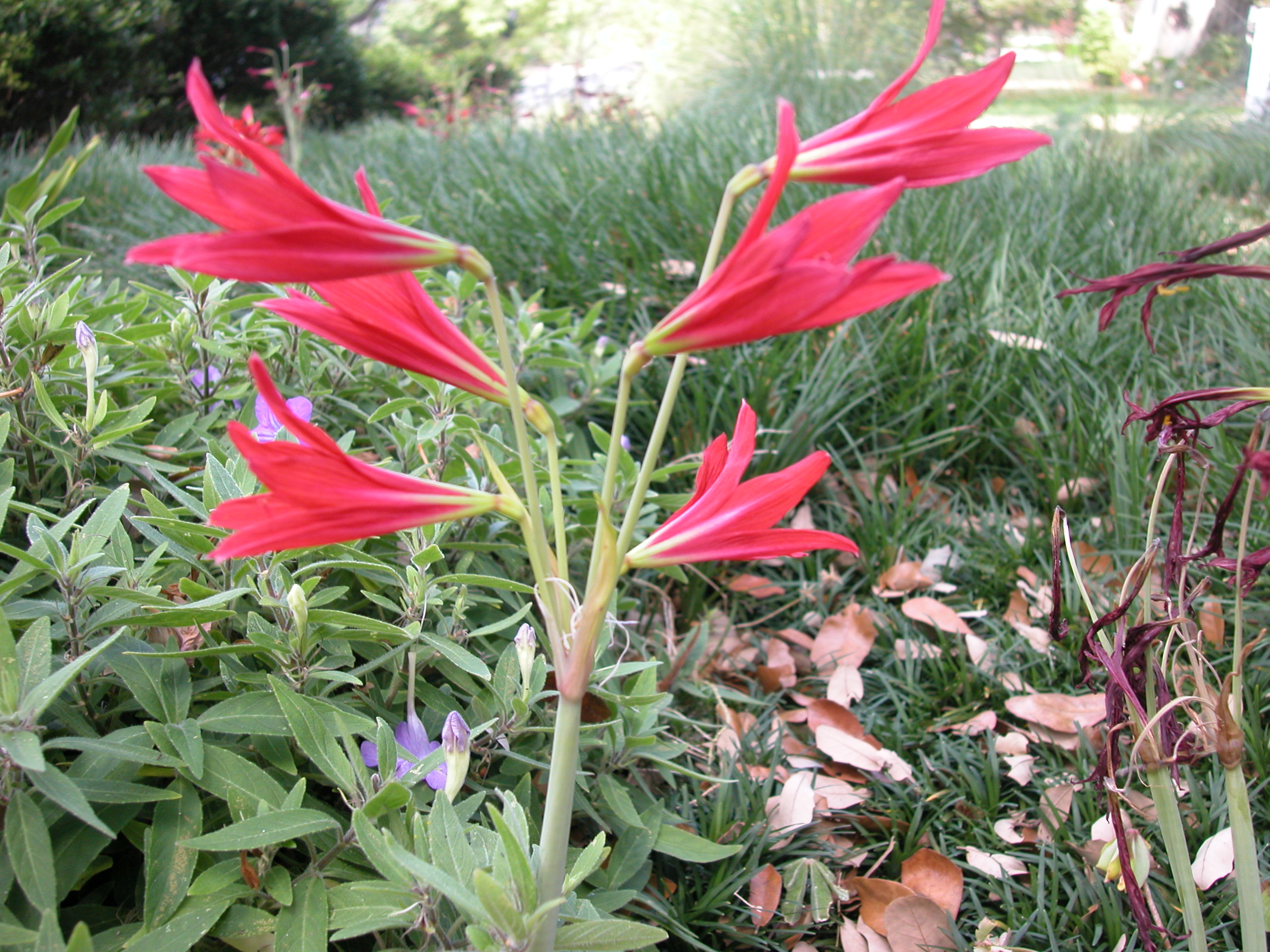Human Flower Project
Ecology
Monday, September 27, 2004
Nose-Gays, They’re Not
Stories from Malaysia and Australia disagree on “the world’s biggest flower,” except how it smells.
Put a handkerchief over your nose and send up a muffled cheer.
Titum Arum, the world’s biggest flower, has bloomed for only the second time in Australia. Officials at Sydney’s Botanic Garden Trust are thrilled and choking. “It has the smell of rotting fish,” says executive director Tim Entwhistle.
Amorphophallus titanum looks like its Latin name, an excited giant, and can grow as large as 2.9 metres. It blossoms slowly and should climax about October 7. Check out the United States Botanic Garden’s specimen that bloomed in July.
The New Straits Times Press (Malaysia) reports today on a different flower, Rafflesia, claiming it’s “the world’s biggest.”
“The flower has been used for centuries by the Orang Asli as a remedy for internal injuries, and is especially prescribed for women after they give birth.” The expanding interest in herbal remedies has set off a collecting spree, so that now some local healers worry that the plant may become endangered. Law permits the Orang Asli to harvest the rafflesia buds even in protected areas, but with prices for the plants ascending, some tribespeople are selling to middlemen.
Rafflesia blooms look like the flower babies in the Land of Oz. Only a metre in diameter, they can’t hold a candle, as it were, to Titum Arum. Except they smell like dead meat, too. Eau de Carrion, anyone?
Monday, September 13, 2004
Flowers as Weather-Casters
Arctic wildflowers, like Appalachia’s service tree and the “chilly lily,” predict climate changes, only this time the change may be global.
The chilly lilies are up in Central Texas. Morton King of Georgetown, TX, gave this nickname to the old-fashioned Oxblood Lily (rhodophiala bifida) after noticing that their blooms coincided with the first cold spell at summer’s end.

“They’ve become famous,” says King, 91, “because they come up a week or two before the first cold front in the fall. They are alleged to be an accurate predictor of when things are going to cool off and youre going to have a fall rain.”
Each year when they bloom, King writes to the Georgetown Sun, telling the community that autumn is, blessedly, on the way. A Ph.D. sociologist, King is careful about causality: “Now, it’s the coming cold weather that makes them come up, I suspect, rather than vice versa,” he laughs.
Salon.com reported last week about another flower harbinger that has Alaskan botanists anything but happy. According to Rebecca Clarren’s 9/11/04 report “Baked Alaska,” strangely mild September temperatures have set off a second bloom cycle this year in the eriophorum plant. Not good. You don’t have to be a University of Alaska botanist to figure out that flower seeds don ‘t winter over too well in the Arctic. Clarren explains, “Flowers only make one set of buds each year, so if they spend next year’s buds now, they’ll be out of luck next spring. If the warming trend continues, the flowers may go extinct.”
Researchers near Toolik Lake believe that the eriophorum plant’s confusion is yet another sign of global warming, which already has melted several Alaskan shoreline communities off the map.
Are there flower weather-predictors in your area? In Eastern Kentucky, the service plant (pronounced “sarvice” there) was once the harbinger of spring. I’ve heard that once it bloomed, people knew the ground had thawed enough for burials.
The twice-blooming eriophorum may portend a very different kind of funeral.

